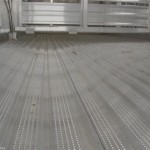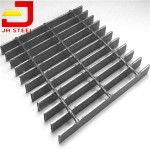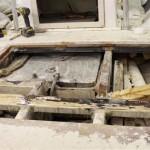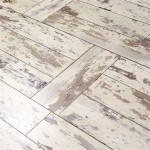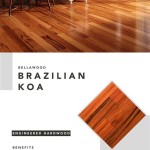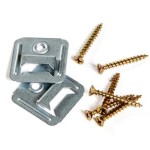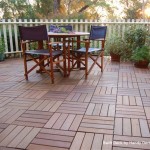Prefinished Oak Flooring: A Comprehensive Guide
Oak flooring has long been a preferred choice for homeowners seeking a durable, aesthetically pleasing, and timeless flooring solution. Among oak flooring options, prefinished oak flooring stands out for its convenience and immediate usability. This article will delve into the specifics of prefinished oak flooring, covering its benefits, types, installation considerations, maintenance, and cost factors, providing a comprehensive understanding for prospective buyers and industry professionals alike.
Prefinished oak flooring, as the name suggests, refers to oak floorboards that have been sanded, stained, and sealed at the factory before installation. This contrasts with unfinished oak flooring, which requires these steps to be performed on-site after installation. The prefinishing process offers several advantages, primarily in terms of time savings and consistency of finish. The controlled environment of a factory allows for precise application of stains and sealants, resulting in a more uniform and durable finish compared to on-site finishing.
Oak, as a material, inherently contributes to the flooring's appeal. Oak is known for its hardness, resistance to wear and tear, and distinctive grain patterns. Its versatility allows it to complement a wide range of interior design styles, from traditional to contemporary. The natural variations in color and grain ensure that each oak floor is unique, adding character and warmth to the space.
Benefits of Prefinished Oak Flooring
The popularity of prefinished oak flooring stems from a multitude of advantages over unfinished options. These advantages contribute to its appeal for both residential and commercial applications.
One of the most significant benefits is the reduced installation time. Since the finishing process is already complete, the floor can be walked on immediately after installation. This eliminates the need for several days of sanding, staining, and drying, which are required for unfinished flooring. This rapid installation minimizes disruption to daily routines and allows for faster completion of renovation projects.
Another key advantage is the consistent and durable finish achieved in a factory setting. Manufacturers utilize advanced equipment and controlled environments to ensure uniform application of stains and sealants. This results in a smoother, more even finish compared to on-site applications, which can be susceptible to variations in humidity, temperature, and the skill of the applicator. The factory finish is also typically more durable, incorporating multiple coats of high-quality sealant that are often resistant to scratches, stains, and fading.
Furthermore, prefinished flooring simplifies the installation process. Experienced installers can quickly and efficiently install prefinished planks, minimizing the potential for errors or inconsistencies. This can lead to a more professional-looking result and reduce the overall cost of labor. The click-lock systems available with many prefinished engineered oak floors further contribute to ease of installation, making it a viable option for DIY enthusiasts.
Finally, prefinished floors significantly reduce the mess and odor associated with on-site finishing. The sanding process creates a substantial amount of dust, which can be difficult to contain and clean up. Similarly, the application of stains and sealants can produce strong odors that can linger for several days. Prefinished flooring eliminates these issues, creating a cleaner and healthier environment during and after installation.
Types of Prefinished Oak Flooring
Prefinished oak flooring is available in a variety of constructions, styles, and grades, allowing homeowners to choose options that best suit their needs and aesthetic preferences. The two primary types are solid oak and engineered oak.
Solid oak flooring consists of planks made from a single piece of oak wood. This construction provides a solid, durable surface that can be sanded and refinished multiple times over its lifespan. Solid oak is typically used in areas with stable humidity levels and is not recommended for installation in basements or over concrete slabs due to its susceptibility to moisture damage. Its thickness contributes to its longevity, often lasting for generations with proper care.
Engineered oak flooring, on the other hand, is constructed of multiple layers of wood veneer bonded together with an adhesive. The top layer, or wear layer, is a layer of oak veneer that is visible on the surface of the floor. This construction makes engineered oak more dimensionally stable than solid oak, meaning it is less prone to expansion and contraction due to changes in humidity. Engineered oak is therefore suitable for installation in a wider range of environments, including basements and over concrete subfloors. The thickness of the wear layer determines how many times the flooring can be sanded and refinished.
Within these two main types, there are also various grades of oak flooring, which are determined by the appearance and characteristics of the wood. These grades typically include select, common, and rustic grades. Select grade oak has a consistent color and minimal knots or imperfections. Common grade oak has more variation in color and grain, as well as some knots and imperfections. Rustic grade oak has the most pronounced variations in color and grain, as well as larger knots and imperfections. The choice of grade depends on the desired aesthetic and the budget. Rustic grades can provide a more characterful and unique appearance at a lower cost, while select grades offer a more uniform and refined look.
Furthermore, prefinished oak flooring is available in various widths and lengths. Wider planks tend to create a more modern and spacious feel, while narrower planks can be more traditional and formal. The length of the planks can also vary, with longer planks generally being more expensive but creating a more seamless and upscale appearance. The choice of width and length depends on the size and layout of the room, as well as the desired aesthetic.
Installation and Maintenance Considerations
Proper installation and maintenance are crucial for ensuring the longevity and performance of prefinished oak flooring. Following recommended guidelines and implementing appropriate care practices can significantly extend the life of the floor and preserve its aesthetic appeal.
Installation methods for prefinished oak flooring vary depending on the type of flooring and the subfloor. Solid oak flooring is typically nailed or glued down to a wooden subfloor. Engineered oak flooring can be nailed, glued, or floated over a variety of subfloors, including concrete. Floating installations involve interlocking the planks together without attaching them to the subfloor, allowing the floor to expand and contract freely with changes in humidity. Regardless of the installation method, it is essential to ensure that the subfloor is clean, level, and dry before installing the flooring.
Before installation, it is recommended to acclimate the flooring to the environment in which it will be installed. This involves storing the flooring in the room for several days to allow it to adjust to the temperature and humidity levels. Acclimation helps to minimize expansion and contraction after installation, reducing the likelihood of gaps or cupping.
Regular maintenance of prefinished oak flooring involves sweeping, vacuuming, and occasional damp mopping. Sweeping or vacuuming removes dirt and debris that can scratch the finish, while damp mopping cleans up spills and stains. It is important to use a cleaner specifically designed for hardwood floors and to avoid using excessive water, which can damage the wood. The use of mats at entryways and area rugs in high-traffic areas can also help to protect the finish from wear and tear.
Over time, the finish on prefinished oak flooring may become scratched or worn. When this occurs, the floor can be recoated with a new layer of sealant. Recoating involves lightly sanding the existing finish and applying a new coat of polyurethane or other sealant. This process can restore the floor's appearance and protect it from further damage. Solid oak flooring can be sanded and refinished multiple times, while engineered oak flooring can be sanded and refinished depending on the thickness of the wear layer.
Addressing spills promptly is essential to prevent staining and damage. Certain substances, such as wine, coffee, and pet urine, can penetrate the finish and discolor the wood if left unattended. Using coasters under drinks and placing protective pads under furniture can also help to prevent scratches and dents.
Furthermore, controlling the humidity levels in the home can help to prevent warping and cracking. Maintaining a consistent humidity level between 30% and 50% is generally recommended. During dry periods, a humidifier can be used to add moisture to the air, while during humid periods, a dehumidifier can be used to remove excess moisture.
Finally, avoid wearing shoes with high heels or cleats on the floor, as these can cause dents and scratches. Consider using floor protectors under furniture legs to prevent damage. Regular inspections can help identify potential problems early, such as loose planks or water damage. Addressing these issues promptly can prevent more significant and costly repairs later on.

Red Oak Rustic Grade Prefinished Solid Hardwood Flooring Floor Depot

Prefinished Hardwood Oak Flooring Stonewood S

Prefinished Hardwood Flooring Charleston Sc Floor Experts Davis Floors And Design

Prefinished Oiled Floor Uv Northern Collection Stonewoods Com

White Oak Engineered Prefinished Stained Na Planet Hardwood

Hickory Rustic Grade Prefinished Solid Hardwood Flooring Floor Depot

Pre Finished Vs Site Hardwood Floors

White Oak Oakton Distressed Sc Character 3 4 X 6 2 5

Closeout Solid Prefinished Hardwood Flooring Multiple Options Avail Hardwoods4less Com

White Oak 3 4 X 9 1 Solid Hardwood Flooring
Related Posts

